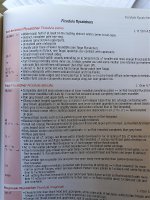johnallcock
Well-known member
Sorry, saying 'this photo' is misleading. I actually meant the entire set, so should probably have said 'these photos'.
I'm not sure what you mean when you say that the black on Taiga 'blends into' the brown of the back. The uppertail coverts on Taiga are jet black and the same colour as the tail, but these contrast very sharply with the grey-brown back. This is usually a square-cut division, straight across at the base of the tail or perhaps slightly higher. (See this bird: http://orientalbirdimages.org/search.php?Bird_Image_ID=167707&Bird_ID=2781&Bird_Family_ID=&Location=)
On Red-breasted the uppertail coverts are not as dark and are paler than the tail feathers, so the brown colour extends further along the tail. The division between black and brown is not as sharp or square-cut. This fits with the brown 'u' you mention on your Red-breasted pictures. (Compare this bird http://orientalbirdimages.org/search.php?Bird_Image_ID=157749&Bird_ID=2689&Bird_Family_ID=&Location=)
The pattern that I see on the OP bird and on Andy's image from Vietnam shows the sharp, square contrast between the uppertail coverts and the rump, fitting Taiga. On the Taiga photos posted by MacNara, this area is obscured so it is hard to clearly see the division, but the uppertail coverts are very black, like the tail.
The calls of the two species are distinctive. Taiga has a faster rattle, whereas Red-breasted has a slightly slower call, and seems to more often give a single-note call.
I'm not really familiar enough with Red-breasted to say whether it can be completely ruled out for this bird, and what the chances would be for acceptance in Israel.
I'm not sure what you mean when you say that the black on Taiga 'blends into' the brown of the back. The uppertail coverts on Taiga are jet black and the same colour as the tail, but these contrast very sharply with the grey-brown back. This is usually a square-cut division, straight across at the base of the tail or perhaps slightly higher. (See this bird: http://orientalbirdimages.org/search.php?Bird_Image_ID=167707&Bird_ID=2781&Bird_Family_ID=&Location=)
On Red-breasted the uppertail coverts are not as dark and are paler than the tail feathers, so the brown colour extends further along the tail. The division between black and brown is not as sharp or square-cut. This fits with the brown 'u' you mention on your Red-breasted pictures. (Compare this bird http://orientalbirdimages.org/search.php?Bird_Image_ID=157749&Bird_ID=2689&Bird_Family_ID=&Location=)
The pattern that I see on the OP bird and on Andy's image from Vietnam shows the sharp, square contrast between the uppertail coverts and the rump, fitting Taiga. On the Taiga photos posted by MacNara, this area is obscured so it is hard to clearly see the division, but the uppertail coverts are very black, like the tail.
The calls of the two species are distinctive. Taiga has a faster rattle, whereas Red-breasted has a slightly slower call, and seems to more often give a single-note call.
I'm not really familiar enough with Red-breasted to say whether it can be completely ruled out for this bird, and what the chances would be for acceptance in Israel.








